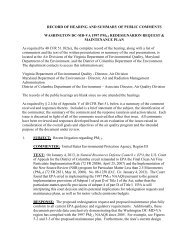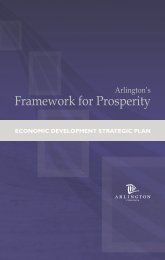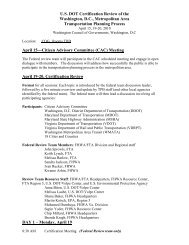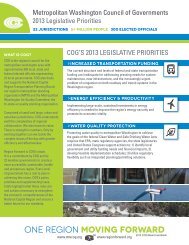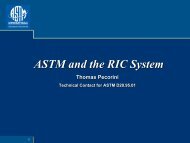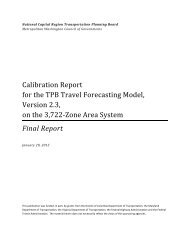PTI Local Government Energy Assurance Guidelines - Metropolitan ...
PTI Local Government Energy Assurance Guidelines - Metropolitan ...
PTI Local Government Energy Assurance Guidelines - Metropolitan ...
Create successful ePaper yourself
Turn your PDF publications into a flip-book with our unique Google optimized e-Paper software.
Under the NRF, DOE/OE is the lead Federal agency for responding to energy emergencies, once Emergency Support<br />
Function 12 is activated. (See Appendix C for additional information.) State and local governments should work<br />
closely with DOE/OE in sharing energy emergency and shortage information as well as seeking technical support.<br />
DOE/OE’s primary responsibilities under ESF-12 include:<br />
■■<br />
■■<br />
■■<br />
■■<br />
■■<br />
Deploying response teams to affected areas to assist in response and restoration efforts<br />
Monitoring energy system damage and repair work and identifying the support resources needed for their<br />
restoration<br />
Collecting, assessing, and providing information on energy supply, demand, and prices as well as contributing<br />
to situation and after-action reports<br />
Prioritizing plans and actions for the restoration of energy during response and recovery actions<br />
Serving as the focal point for issues and policy decisions relating to energy in all response and restoration efforts<br />
Key Questions<br />
…in Understanding Response Roles and Responsibilities<br />
1. What role should the energy assurance coordinator play in an energy emergency?<br />
2. Which local private sector companies should be approached about sharing their emergency<br />
response plans if possible, and what is the best way to coordinate with these plans?<br />
3. Who is the current local government lead in an energy emergency, and should it remain the<br />
same person?<br />
4. Who is the primary State government contact during an energy emergency?<br />
5. Is there a comprehensive list of local government agencies that will be responsible for at least<br />
one function during an energy emergency?<br />
6. Has the energy emergency knowledge and expertise offered by the COG and/or MPO staff<br />
been incorporated into the EAP?<br />
7. What is the best way to define very clear roles between local government and local energy<br />
service providers, while also maximizing the information exchange between all groups<br />
(without compromising valid security concerns on both sides)?<br />
8. With respect to local government roles and responsibilities, how does the EAP interact with<br />
the local COOP or similar response framework, and are the two plans are complementary and<br />
consistent?<br />
9. How does the jurisdiction coordinate with regional, State, and Federal partners to make<br />
emergency response decisions?<br />
10. Who from the local government is responsible for the first call(s) to private sector energy<br />
suppliers in an energy emergency, and how will information gathered from that call be<br />
transferred to others in the local government?<br />
11. Are there updated flow-charts and/or organizational charts that show all relevant local<br />
government roles and responsibilities during an energy emergency?<br />
44 | 3 – How to Develop or Enhance a <strong>Local</strong> <strong>Energy</strong> <strong>Assurance</strong> Plan



